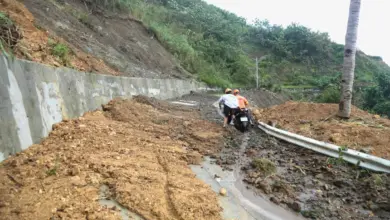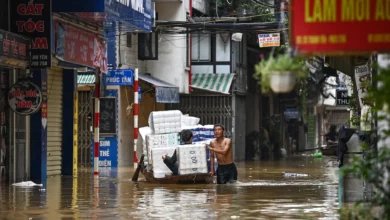
CAGAYAN DE ORO, Philippines — Disaster agencies Monday rushed to deliver body bags, food, water, and medicine to crowded evacuation centers in the southern Philippines as officials considered digging mass graves for hundreds killed in weekend flash floods.
The national disaster agency said 533 died and 309 remain missing, while the local Red Cross put the toll at 652 killed and more than 800 missing.
Casualties from the flashfloods exceeded the more than 450 people killed in 2009 when a tropical storm dumped heavy rains on the main Luzon island, inundating nearly the entire capital Manila.
Typhoon Washi slammed ashore in the Mindanao region of the Philippines while residents slept at the weekend, sending torrents of water and mud through riverside villages and sweeping houses out to sea.
In the aftermath, radio stations and local governments have been deluged by calls and appeals from survivors asking for help to bury the dead or find missing relatives.
"My suggestion is, so that illnesses won't spread, let's have mass graves," Benito Ramos, head of the national disaster agency, said in a radio interview. "This will be the discretion of local governments and the DOH [Department of Health]."
"From the helicopter, we saw four major river systems, all houses along the riverbanks were totally destroyed."
Josephine Dalangin, a resident of Cagayan de Oro, said she and three other residents, including a boy, survived by clinging on a tree trunk for 11 to 12 hours while floating in the sea before they were rescued by a passing boat.
"I did not feel hunger, I did not feel any thirst," Dalangin told a local radio station. "I just prayed to the Lord that the rains, winds and waves would stop."
The cities of Cagayan de Oro and Iligan, worst hit by the disaster, are running out of evacuations centers and coffins for the dead, with churches also converted into temporary evacuation.
Brigadier General Roland Amarille, head of an army task force in Iligan, said Sunday soldiers had been mobilized to recover bodies and build coffins.
"We need body bags and lime to deal with too many cadavers," Amarille said, fearing an outbreak of disease.
"Local mortuaries are no longer accepting cadavers and they are even asking people to bury the dead at once because there are too many bodies even in hallways."
Mindanao island, the southernmost in the Philippines, is a mineral-rich region that also produces rice and corn but is not normally in the path of an average 20 typhoons that hit the Southeast Asian country each year.




